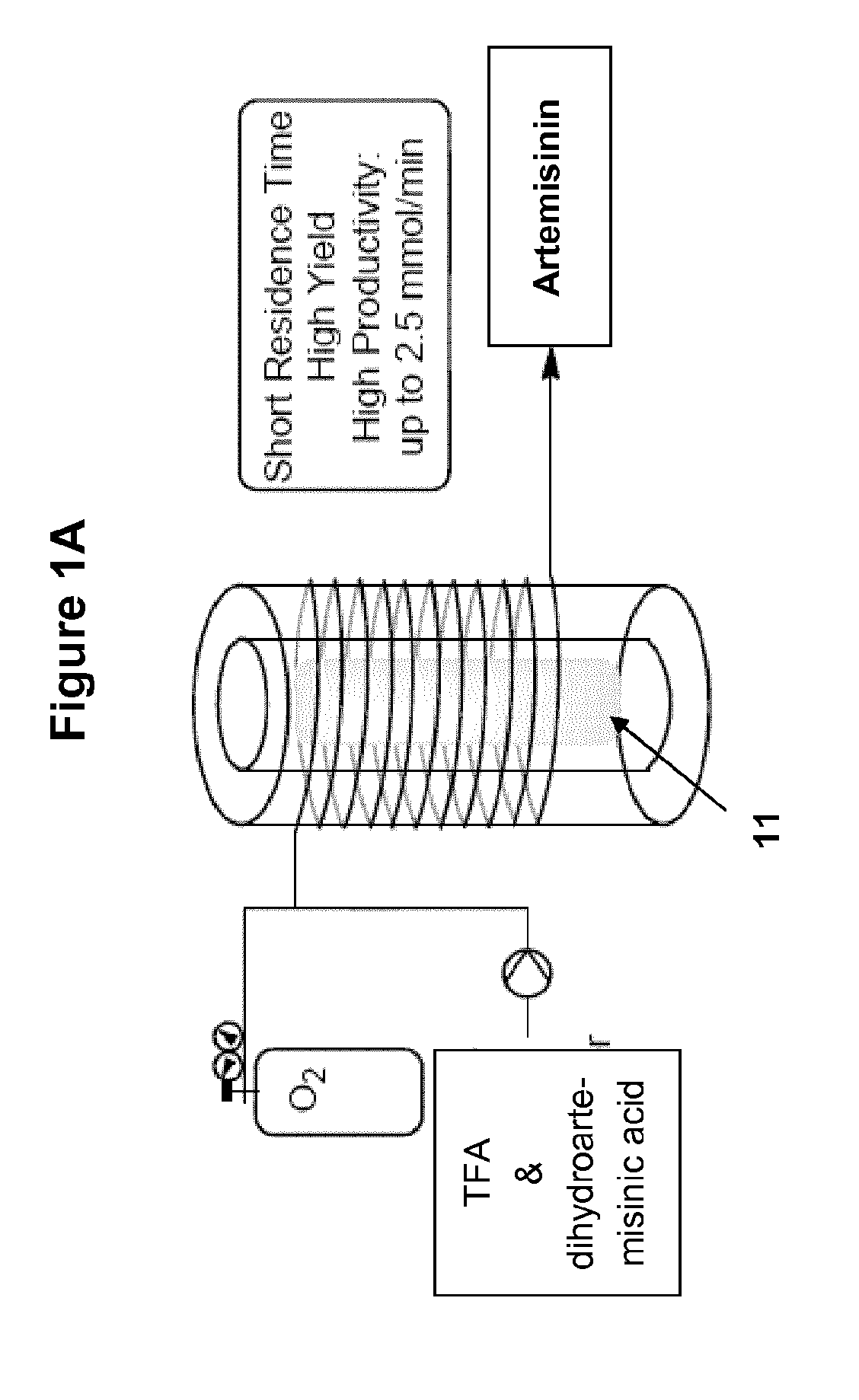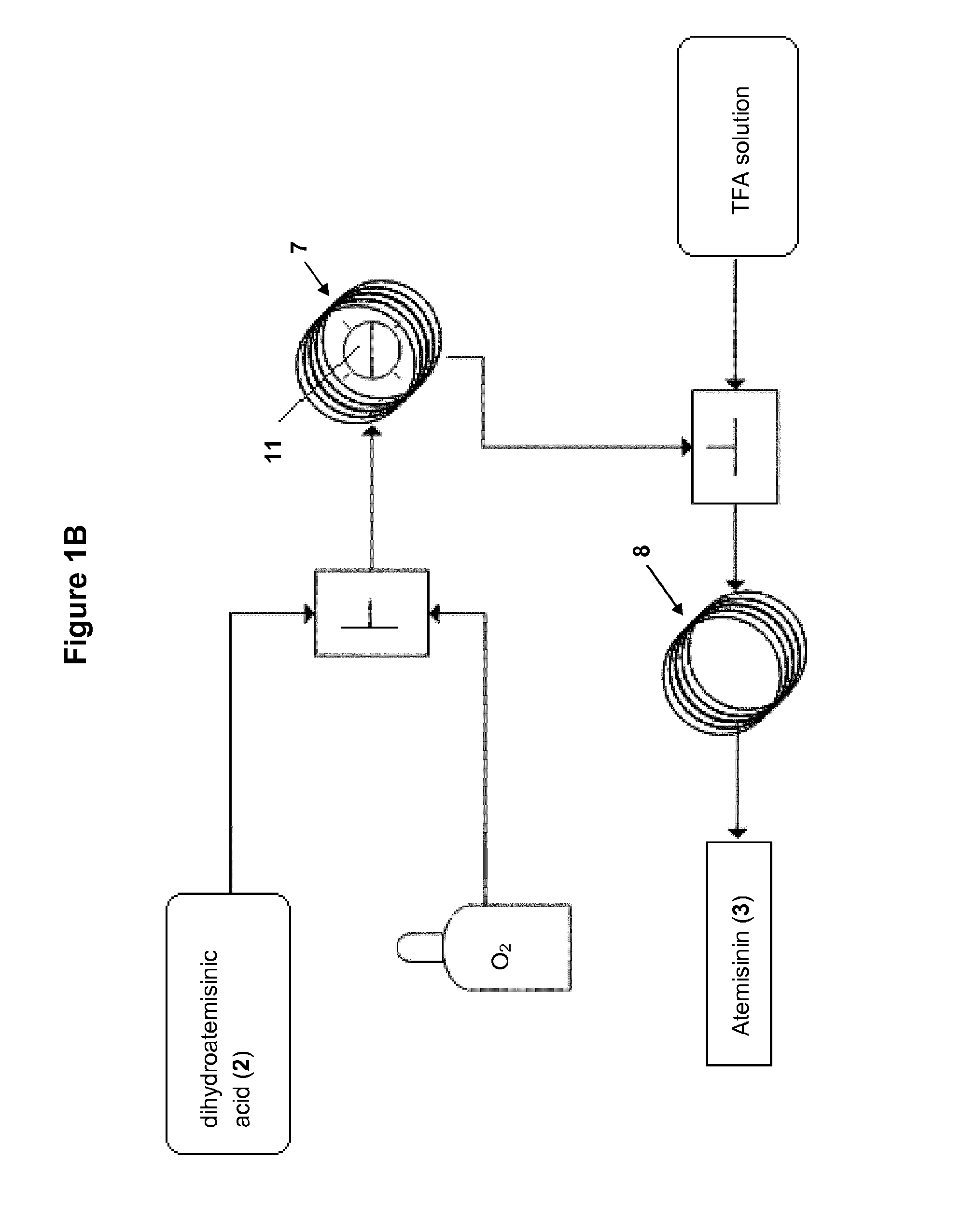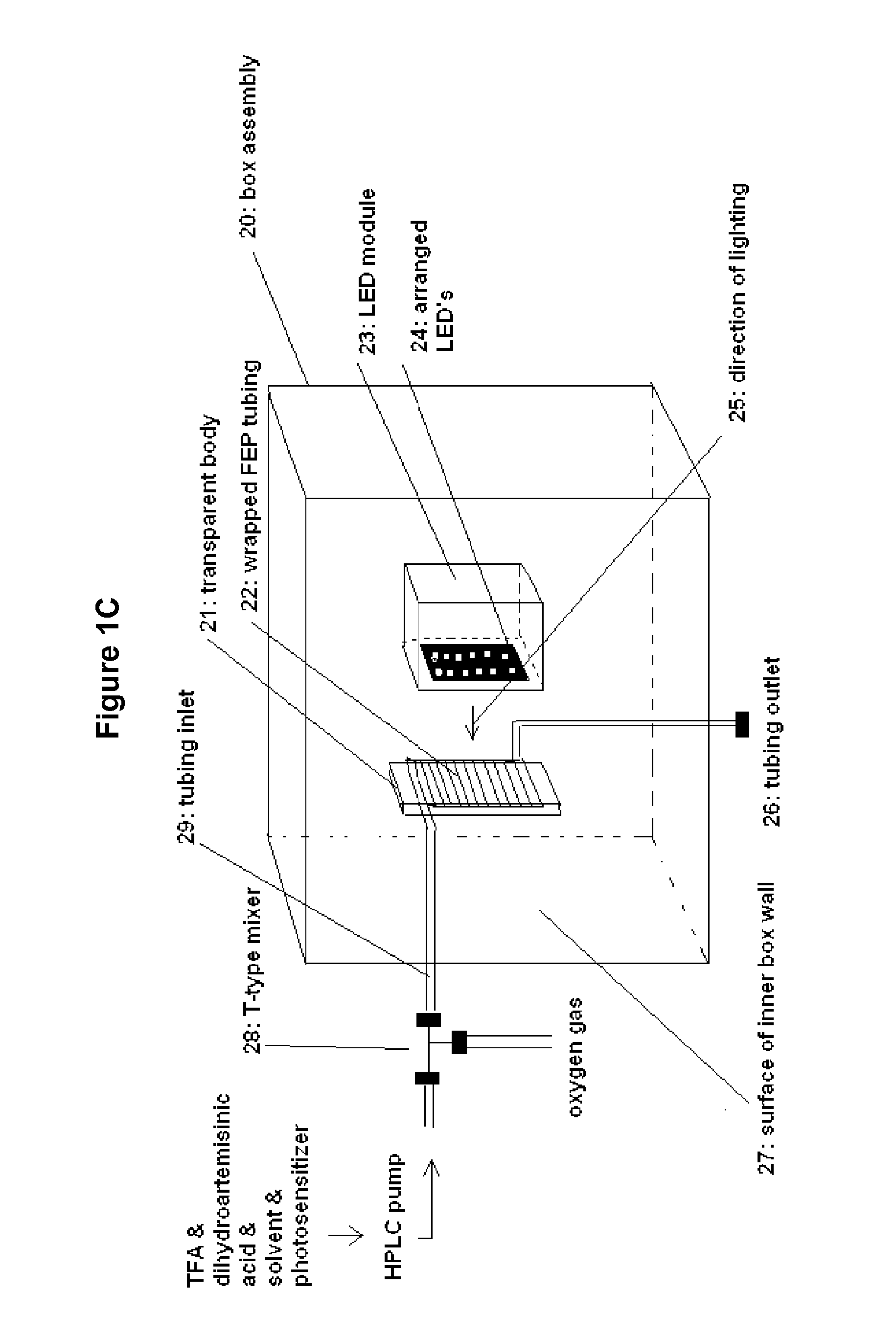Method and apparatus for the synthesis of dihydroartemisinin and artemisinin derivatives
a technology of artemisinin and dihydroartemisinin, which is applied in the field of methods and apparatus for the synthesis of dihydroartemisinin and artemisinin derivatives, can solve the problems of time-consuming and laborious methods, the bioavailability of artemisinin is poor, and the death of almost one million peopl
- Summary
- Abstract
- Description
- Claims
- Application Information
AI Technical Summary
Benefits of technology
Problems solved by technology
Method used
Image
Examples
example 1
Reaction Conditions for the Synthesis of Artemisinin (3) in Continuous Flow (FIG. 1B)
[0284]
[0285]A solution of dihydroartemisinic acid (2.95 g, 12.5 mmol) and tetraphenylporphyrin (15 mg, 0.02 mmol) in dichloromethane (total volume of the solution: 25 mL, volumetric flask) and a solution of trifluoroacetic acid (1.9 mL, 25 mmol) in dichloromethane (18.1 mL) were prepared and given into their respective feed. The Hg lamp was turned on 30 min prior to the beginning of the experiment and the second portion of the photochemical reactor was heated at 60° C. The photochemical reactor (7) was flushed with pure dichloromethane (2.5 mL / min), dichloromethane (0.5 mL / min) and oxygen (7.5 mL / min, 11.5 bar) for 10 min. The reagents were then injected via their respective feed at a flow rate of 2.5 mL / min and the oxygen flow was readjusted to 7.5 mL / min (11.5 bar). Both streams joined in the first mixer. From there they entered the photochemical reactor (7). The TFA solution was injected at the e...
example 2
Flow Reactor Setup for the Synthesis of Artemisinin According to Example 1
[0286]The flow reactor setup (FIG. 1D) for the synthesis of artemisinin (3) consists of a feed F1 for a solution of dihydroartemisinic acid (2), an automated two inlet switch valve 14a for regulating the composition of the feed for the solution of dihydroartemisinic acid (2), allowing for rapid switching from pure solvent to the solution containing the dissolved dihydroartemisinic acid, a first HPLC pump 15a (Vapourtec, R2C+ unit) downstream to switch valve 14a, pumping the dihydroartemisinic acid (2) solution with a throughput of 2.5 mL / min to the first ETFE T-mixer 28 (IDEX Health and Science, P-632) for mixing the dihydroartemisinic acid (2) solution and the oxygen, a first check-valve 16 (IDEX Health and Science, inline check-valve CV-3010) between the first HPLC pump 15a and the mixer 28, a mass flow controller 18b (Influx, SV1B5-AI05, allowing control of the oxygen flow rate from 5-90 cm3 / min) connected ...
example 3
Synthesis of Hydroperoxide (2a-c) in Continuous Flow Using the Box Assembly
[0287]The flow reactor setup (FIG. 1C) for the synthesis of hydroperoxide (3) consists of a feed F1 for a solution of dihydroartemisinic acid (2), a pumping unit analogously to example 2 (consisting of an automated two inlet switch valve 14a for regulating the composition of the feed for the solution of dihydroartemisinic acid (2), allowing for rapid switching from pure solvent to the solution containing the dissolved dihydroartemisinic acid, a HPLC pump 15a (Vapourtec, R2C+ unit) downstream to switch valve 14a), pumping the dihydroartemisinic acid (2) solution with a throughput of 1.25 mL / min to a ETFE T-mixer 28 (IDEX Health and Science, P-632) for mixing the dihydroartemisinic acid (2) solution and the oxygen, a mass flow controller 18b (Influx, SV1B5-AI05, allowing control of the oxygen flow rate from 5-90 cm3 / min) connected to a manometer 18a fixed on an oxygen tank 17 (Air Liquide, O2 99.995% pure), thu...
PUM
 Login to View More
Login to View More Abstract
Description
Claims
Application Information
 Login to View More
Login to View More - R&D
- Intellectual Property
- Life Sciences
- Materials
- Tech Scout
- Unparalleled Data Quality
- Higher Quality Content
- 60% Fewer Hallucinations
Browse by: Latest US Patents, China's latest patents, Technical Efficacy Thesaurus, Application Domain, Technology Topic, Popular Technical Reports.
© 2025 PatSnap. All rights reserved.Legal|Privacy policy|Modern Slavery Act Transparency Statement|Sitemap|About US| Contact US: help@patsnap.com



